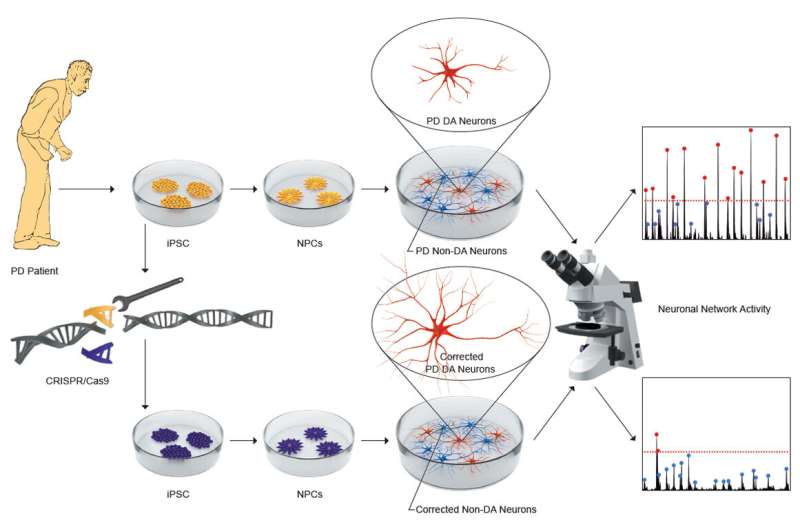An early neuronal dysfunction in Parkinson's that could help early diagnosis

Researchers from IDIBELL and the University of Barcelona (UB) report that neurons derived from Parkinson's patients show impairments in their transmission before neurodegeneration. The study used dopaminergic neurons differentiated from patient stem cells as a model.
Parkinson's is a neurodegenerative disease characterized by the death of dopaminergic neurons. This neuronal death leads to a series of motor manifestations characteristic of the disease, such as tremors, rigidity, slowness of movement, or postural instability. In most cases, the cause of the disease is unknown; however, mutations in the LRRK2 gene are responsible for 5% of cases.
Current therapies against Parkinson's focus on alleviating symptoms, but do not stop its progression. It is thought that early interventions before the appearance of the first symptoms that prevent neuronal death could slow down or even stop the evolution of the disease. However, currently, the diagnosis is based on the appearance of symptoms, when 70% of the neurons have already been lost.
A group of researchers from IDIBELL and the University of Barcelona (UB) has identified early functional deficiencies, before death, in neurons derived from patients with genetic Parkinson's. Dr.Antonella Consiglio says, "These discoveries open the door to early diagnosis, which would allow us to carry out a premature intervention that would slow down neuronal death, and therefore, would stop the evolution of the disease."
In this work, dopaminergic neurons, the most vulnerable in Parkinson's, differentiated from stem cells (iPSC) of healthy individuals and patients with genetic Parkinson's, have been used as a model. Researchers have observed that these dopaminergic neurons are capable of maturing and forming functional neural networks in culture, in both control and Parkinson's disease conditions.
However, this work published in npj Parkinson's Disease shows that neurons from individuals with Parkinson's are more spontaneously active and present more explosion episodes in which, for example, the entire network is activated at the same time. All this occurs before the neurodegeneration. The researchers believe that this early neuronal dysfunction could be contributing to initiating the cascade of events responsible for the death of dopaminergic neurons, and consequently, Parkinson's disease. Furthermore, this work highlights the extraordinary window of opportunity provided by experimental models based on iPSC in the understanding and presymptomatic evaluation of neurodegenerative diseases.
More information: G. Carola et al, Parkinson's disease patient-specific neuronal networks carrying the LRRK2 G2019S mutation unveil early functional alterations that predate neurodegeneration, npj Parkinson's Disease (2021). DOI: 10.1038/s41531-021-00198-3




















